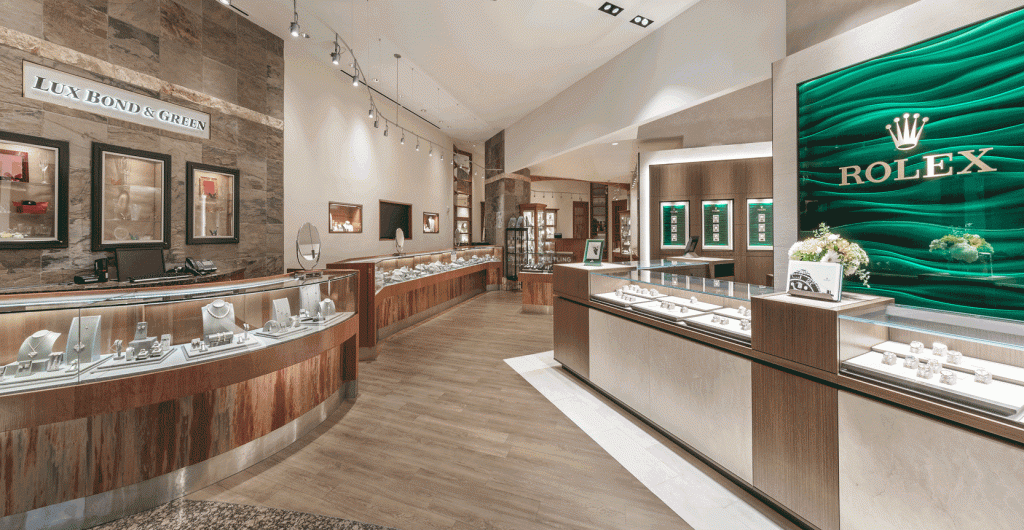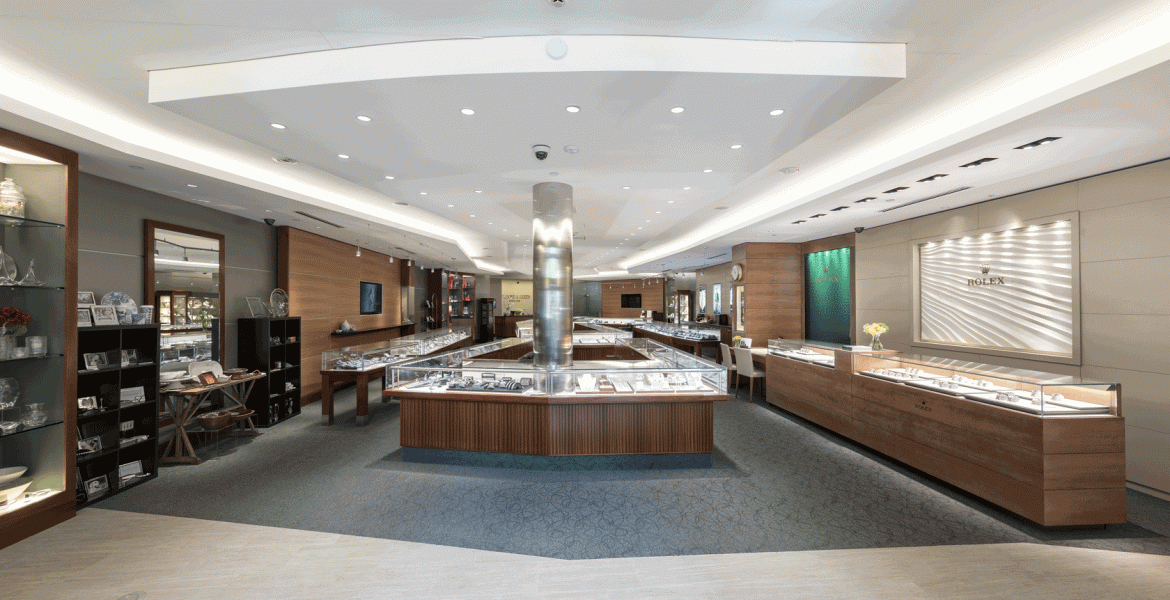John A. Green President and CEO, Lux Bond & Green, Connecticut, expresses his views on the rapidly evolving retail landscape due to the pandemic, in an exclusive interview with Solitaire International.
The surgical mask dangling from one ear, like an avant-garde earring, might give away the fact that John A. Green is in the jewellery business, if I did not know this already.
Green is President and CEO of Lux Bond and Green, a Connecticut-based family business that was established in 1898. The company has expanded from a horse-and-cart enterprise, run by his great grandfather, to six stores and a growing online business today.

Morris A. Green started out by repairing and selling jewellery, pocket watches and gold eye frames on the streets in Waterbury Connecticut. The company is just as good at meeting the customer where they are today.
Lux Bond & Green is one of the longest continuously operating, singularly owned jewellers in the US.
I interviewed Green through FaceTime in his West Hartford office from Paris. Shoppers of diamonds, designer jewellery and classic watches or even inexpensive keepsakes, often make the 100km trek from New York City, to buy in person from Green and his staff, looking for great inventory with a personal touch.

What is the current state of the US retail industry for jewellery?
The United States fared pretty well in 2020, despite the pandemic and political situations. The suburban areas are faring the best, and the city stores without tourism and office workers are having the toughest times. With many jewellery customers at home, not being able to travel, some of our competition with other luxury expenditures gave rise to the value of jewellery for memorable occasions.
How has the pandemic affected your business and business in general?
The pandemic has taught us to be smarter and more nimble to meet the customers’ demands. Without the foot traffic of years past, we needed to become more dynamic and to reach out to our existing and potential customers, to become a virtual showplace. Presenting ideas digitally and telling customers that they could shop the way they wanted to — be it online, instore, kerbside, and virtually — gave retailers who have shoppable websites an advantage.
How was the holiday season business-wise?
The Holiday season was successful with our proactive strategies. The only week that suffered was the final one as we couldn’t allow the number of customers that we usually have shopping in the stores. The previous three weeks from Thanksgiving until the final push were outstanding, both online and instore.
Can you talk about Indian jewellery? Do you sell it?
We have worked with Indian vendors since the 1980s. I have been lucky enough to have travelled to Mumbai, Jaipur and Surat, and have worked with many companies and have solid relationships and friendships.
Do you use supplies from India?
We do. They are major contributors to our industry’s success as well as our company.
What defines your company?
Our people and the exceptional service they provide our customers. Every jeweller says it, but we have so many tenured staff that our strong culture of value, service, selection and teamwork, in a non-commissioned environment, is felt and enjoyed by our customers.
What are the highlights of your career?
I met my wife at the GIA in 1978, so of course that needs to be the highlight. With all seriousness, the many friends we have made in the store and our industry makes going to work very enjoyable. This is an industry of giving and receiving, and I have been very fortunate to have chaired the Jewelers of America helping our industry during the formation of the Kimberley Process, and then chairing the board of Governors at the Gemological Institute of America. From the AGS to JSA, JVC, MJSA, Jewelers for Children and RJC, we have a great industry with many caring men and women who work on the well-being of the entire supply chain. I am very proud to be a small part of this great industry
What changes have you made since the pandemic began?
The evolution of shopping is changing everyday. We listen to our staff and our customers and we need to become more flexible with everything we do. The importance of the customer is undeniable and the changes really come down to the flexibility — to meeting the customer’s wishes and the speed with which we can deliver a high quality product to meet the customers requests.
Is online becoming more important than retail?
For several years, it has become the centerpiece of many retailers’ businesses. It’s where our customers look and become educated before they enter our stores. Yes, online sales experienced significant growth in 2020 with both units and dollar increases, but it’s the experience they have online that can lead them to purchase either online or instore. It has to become hassle-free and this will continue to grow.
What is the price range of the pieces you sell?
We have beautiful items in Sterling that start about $25 and gorgeous one-of-a-kind jewellery pieces retailing at over a million dollars.
How competitive is the US market for jewellery?
Extremely competitive — from Tiffany or Cartier to Costco — we truly compete with everyone. People that drive Maserati or Mercedes shop at Walmart and if we don’t understand that we need to be faster, smarter and more efficient than others in our industry or we will lose the sale let alone lose the customer.
Has the pandemic changed buying habits?
Drastically, as without trade shows or face-to-face meetings with vendors this has been a challenge to keep the inventory current for what our customers want. We kept purchasing what we saw our customers wanting and more importantly communicating as soon as we could with our partner vendors. Having the right merchandise and values in stock is imperative to make sales and keep the relationships with customers, especially in today’s pandemic.

